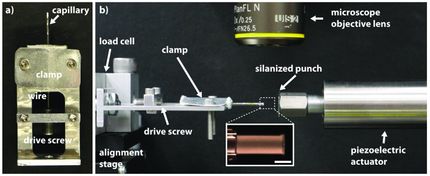Morphology Matters: The Effect of Processing on Solar Cells
The dramatic influence of polymer processing conditions on the performance of polymer solar cells is highlighted by a new paper in the Journal of Polymer Science: Polymer Physics. The study resolves some of the discrepancies found between experimental results from previously published studies and highlights that processing and molecular weight need to be carefully controlled to ensure maximum solar cell performance.
Teams led by Natalie Stingelin from Imperial College, London and Garry Rumbles from the National Renewable Energy Lab in Boulder, Colorado collaborated on the work to study the generation of charge carriers in neat poly(3-hexylthiophene) (P3HT) solar cells and how it depends on the polymer solid-state microstructure. They are able to control the morphology from stacked, non-entangled chains in low-molecular-weight P3HT through to mixed stacked and amorphous, entangled phases in samples with higher molecular weight. The researchers find that it is easiest to separate charges when there are both crystalline and amorphous regions.
In previous studies on P3HT, other researchers have found yields of free charges appearing after photoexcitation can vary enormously between 1% and 15%; this work reveals that different polymer microstructures could account for that variation.
Original publication
Original publication
O. G. Reid, J. A. Nekuda Malik, G. Latini, S. Dayal, N. Kopidakis, C. Silva, N. Stingelin, G. Rumbles, “The influence of solid-state microstructure on the origin and yield of long-lived photogenerated charge in neat semiconducting polymers”, J. Polym. Sci. Part B: Polym. Phys., 2011.
Organizations
Other news from the department science

Get the chemical industry in your inbox
By submitting this form you agree that LUMITOS AG will send you the newsletter(s) selected above by email. Your data will not be passed on to third parties. Your data will be stored and processed in accordance with our data protection regulations. LUMITOS may contact you by email for the purpose of advertising or market and opinion surveys. You can revoke your consent at any time without giving reasons to LUMITOS AG, Ernst-Augustin-Str. 2, 12489 Berlin, Germany or by e-mail at revoke@lumitos.com with effect for the future. In addition, each email contains a link to unsubscribe from the corresponding newsletter.




























































